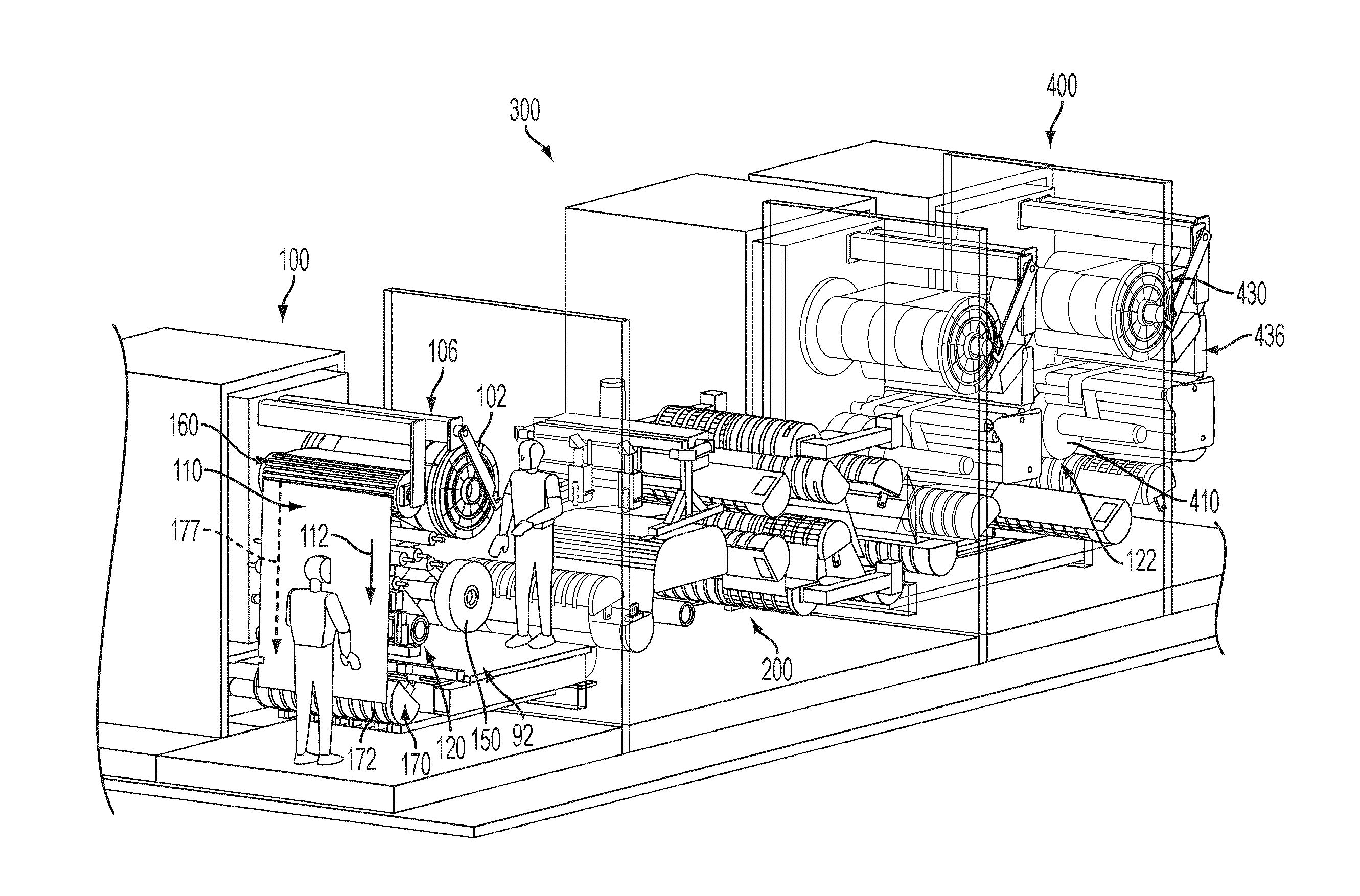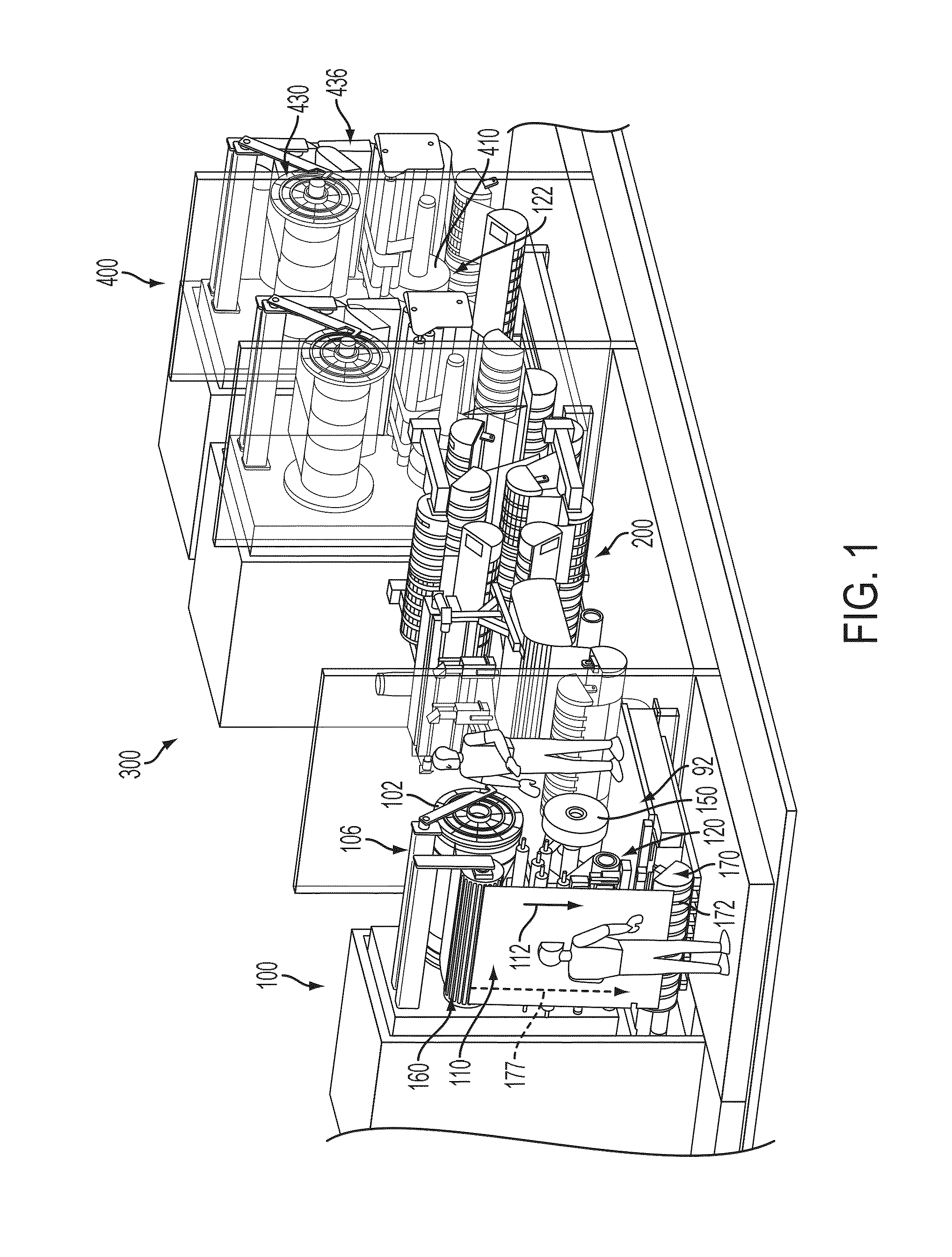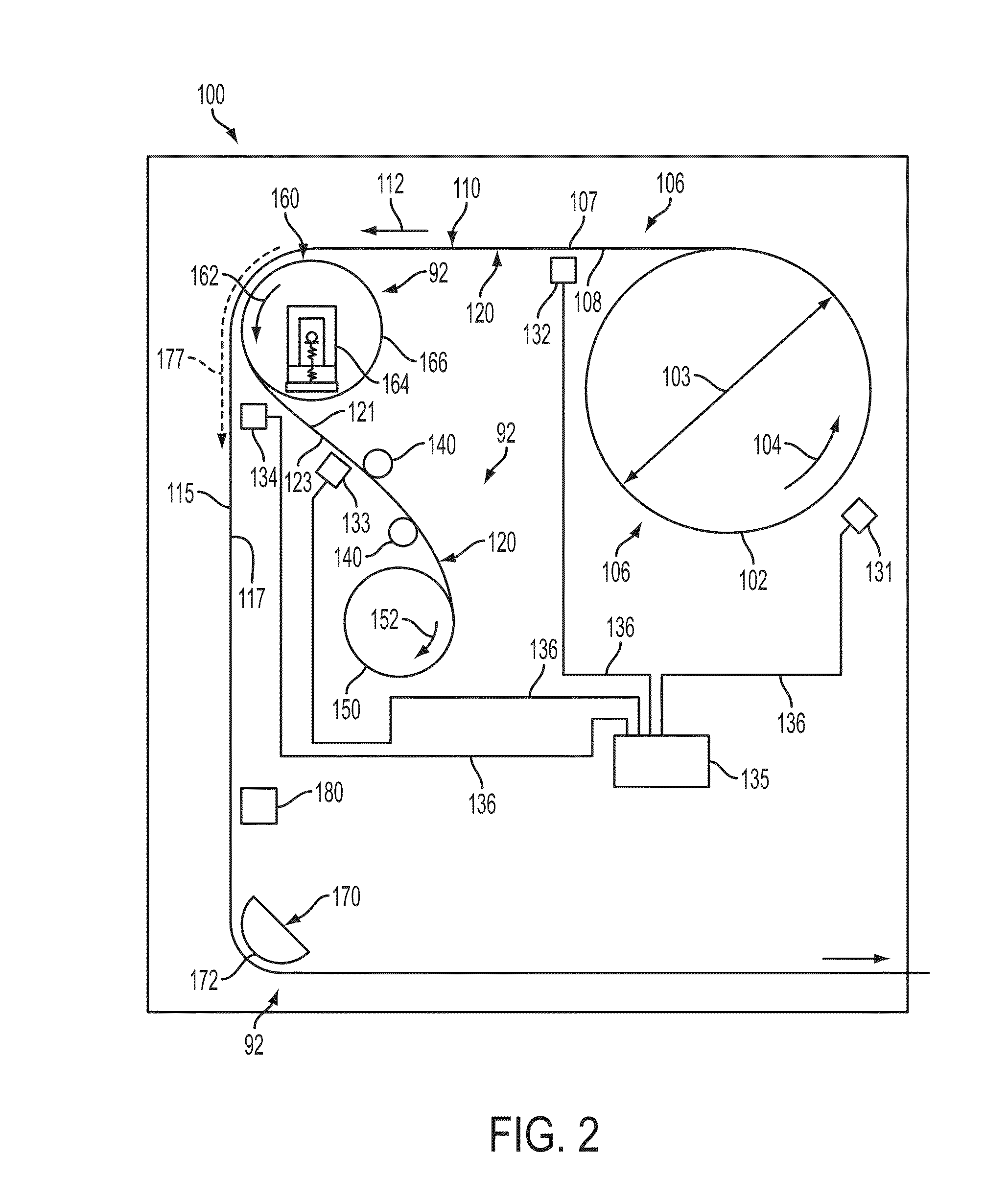Apparatuses and methods to process flexible glass laminates
- Summary
- Abstract
- Description
- Claims
- Application Information
AI Technical Summary
Benefits of technology
Problems solved by technology
Method used
Image
Examples
Embodiment Construction
[0018]Reference will now be made in detail to various embodiments of apparatuses and methods for separating a laminate material from flexible glass, and coupling a laminate material to processed flexible glass, examples of which are depicted in the accompanying drawings. Whenever possible, the same reference numerals will be used throughout the drawings to refer to the same or like parts. FIG. 1 generally depicts one embodiment of a glass laminate processing apparatus used to process flexible glass in a spool-to-spool process. When the glass laminate is unspooled from the glass laminate spool, the glass laminate has an initial electrostatic charge, with the flexible glass having a first electrostatic polarity and the first laminate material having a second electrostatic polarity that is opposite the first electrostatic polarity. The opposing electrostatic charges contained by the flexible glass and the first laminate material create an electrostatic bond between the two components. ...
PUM
| Property | Measurement | Unit |
|---|---|---|
| Pressure | aaaaa | aaaaa |
| Flexibility | aaaaa | aaaaa |
| Tension | aaaaa | aaaaa |
Abstract
Description
Claims
Application Information
 Login to View More
Login to View More - R&D
- Intellectual Property
- Life Sciences
- Materials
- Tech Scout
- Unparalleled Data Quality
- Higher Quality Content
- 60% Fewer Hallucinations
Browse by: Latest US Patents, China's latest patents, Technical Efficacy Thesaurus, Application Domain, Technology Topic, Popular Technical Reports.
© 2025 PatSnap. All rights reserved.Legal|Privacy policy|Modern Slavery Act Transparency Statement|Sitemap|About US| Contact US: help@patsnap.com



